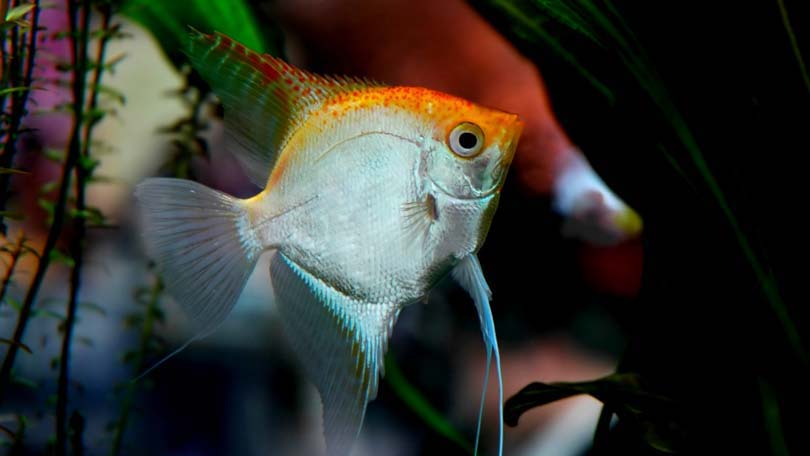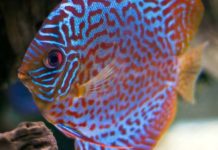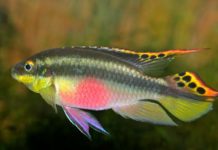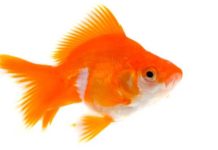
To ensure the survival of your fish, it is necessary to provide them with a balanced diet. Fish food can be kept dry in a refrigerator; however, fish like other live beings appreciate a change of diet occasionally. They will respond with better colors, more interesting behavior and an improved willingness to breed. There are several different ways you can provide your fish with food that is sufficient in nutrients as well as varied enough to keep them happy.
Flake foods are widely available in pet stores and are an easy way to feed your fish. Specialty flakes are available, some of which are particularly high in vegetable matter such as Spirulina. This is quite high in protein as well as a good source of the numerous amino acids which can be difficult to otherwise attain for your fish. Keep in mind; however, that in many cases, the commercially dry fish food which is available is not balanced. This is because the vitamin content gradually declines at room temperature and these foods will only keep for about three months. Therefore, it is best to purchase fish food in small packets rather than in large packages.
Freeze-dried foods are available in aquarium stores and are quite different from flake foods. This type of food generally only has a single animal ingredient in each packet; such as blood worms, mosquito larvae, etc. Instead of flakes, this type of food comes in the form of chunks. Alone, freeze-dried foods do not form a complete diet; however, they can help to round out a good basic flake food diet for your fish. The organisms that are freeze-dried and sold as aquarium food can also generally be found as frozen or living; however, the freeze-dried form provides a convenient way to feed your fish that is not available with other forms.
Another food option is home made fish food. This is a less expensive alternative which can be surprisingly easy when you make a batch that is large enough to last for six months or so. The food can be frozen, making it less time consuming and easier. A food processor is needed along with a few basic staples such as unflavored gelatin, vegetable matter and beef heart as well as some multi-vitamin tablets. Once the ingredients are mixed, they can be frozen in separate freezer containers for easier feeding. There are numerous recipes available online which can introduce you to the process of making your own home made fish food. While this might not be a task you wish to undertake as a main source for your fishes diet, it can provide an interesting supplement for their regular food.
When feeding fish it is important to remember that they are cold blooded and as a result they do not require a lot of energy to maintain their body temperatures. Therefore, it is critical that you do not overfeed them. The general rule of thumb is that fish should be fed no more than they can eat in five minutes twice per day. The only exception to this rule is if you maintain territorial fish, such as cichlids. In this case, the fish can monopolize the food and you may need to feed more than usual, so keep this mind.
Knowing your fish can be quite helpful in determining what they should be fed. For example, many fish can either benefit from a vegetable diet or may require one. Plecos, mbuna and silver dollars are all examples of fish which require vegetable diets. The main reason for this is that these fish have very long guts and as a result will develop digestive problems if they do not receive sufficient amounts of roughage in their diets. Most fish; however, can benefit from the addition of some vegetable matter into their diets.
Commercial frozen foods are also widely available today; which options ranging from fish to aquatic insects. Most are quite inexpensive and provide an excellent dietary supplement for all fishes. Your local pet and aquarium store can be a good source for commercial frozen foods.
Understanding your fishes dietary needs and responding to them with an appropriate selection of well balanced foods can help to keep your fishes happy and healthy for a long time.





